The Future of LED Lighting Technology
Human-Centric LED Lighting
In the coming years, LED lighting is expected to become more centered around human needs. This advanced lighting technology will empower individuals to create the ideal lighting environment tailored to their preferences. Users will have the capability to manage and supervise LED lighting systems through various means. Users will have the option to adjust the colors of their LED lighting. In general, LED lighting provides a white, even, and wide illumination, which is similar to natural sunlight. This lighting’s color can be aligned with human circadian rhythms. LED lighting contains more blue light, akin to sunlight, in contrast to incandescent lighting. This blue light inhibits melatonin production, which is responsible for sleep, and promotes wakefulness.

Conversely, LED lighting can also emit red light, conducive to melatonin production and inducing a sense of sleepiness. Tuning the color of LED lighting holds potential benefits, particularly in settings such as hospitals. In the future, color-adjustable LED lighting will be explored and utilized.
Another method for controlling LED lighting is managing the dimming feature of LED bulbs. This technology senses ambient light in the room and adjusts the brightness of bulbs and fixtures based on natural light sources such as windows.
An additional feature of human-controlled LED lighting technology is occupancy sensing. This capability enables LED lighting systems to detect room occupancy.
Lights can be automatically switched off when no one is in the room, conserving energy. The brightness of the light can be adjusted according to room occupancy, and this can be achieved by sensing motion or heat.
These features are not only beneficial for users but also for the environment.
Internet-Connected LED Lighting
In the age of the internet, the prevalence of internet-connected LED lighting is expected to rise. This technology employs wireless switches, eliminating the need for direct wiring of light switches to LED fixtures. Within this system, LED bulbs are networked, allowing users to monitor and control them remotely through cloud-based platforms using smartphones and other devices.
Internet-connected LED lighting enhances the effectiveness of the previously mentioned human-centric LED system. It offers the potential for smarter buildings and facilities with various capabilities.
Users can remotely control lighting schedules, leading to energy savings by turning off lights when they are not needed and enhancing building security when users are away.

LiFi
LiFi (Light Fidelity) technology is poised to replace WiFi in the future due to its ability to transmit data significantly faster than WiFi. LiFi is a wireless communication technology that employs LED light for data transmission, as opposed to radio waves. Data transmission through LiFi is approximately 100 times faster than WiFi. Li-Fi represents the next phase of LED technology, and LiFi-enabled LED lighting systems provide an alternative means of connecting to the internet in both business and residential settings. Furthermore, LiFi offers solutions to potential issues associated with WiFi.
In Conclusion The future of LED lighting technology is promising, and LEDs have gained widespread popularity. People will continue to switch to LED lighting because of its numerous benefits.
Anticipate further improvements and advancements to ensure that LED lighting technology positively impacts various aspects of human life.If you are still using traditional lighting technologies and have not yet adopted LED, there is no reason to delay. Make the switch to LED lighting technology and enjoy its advantages


